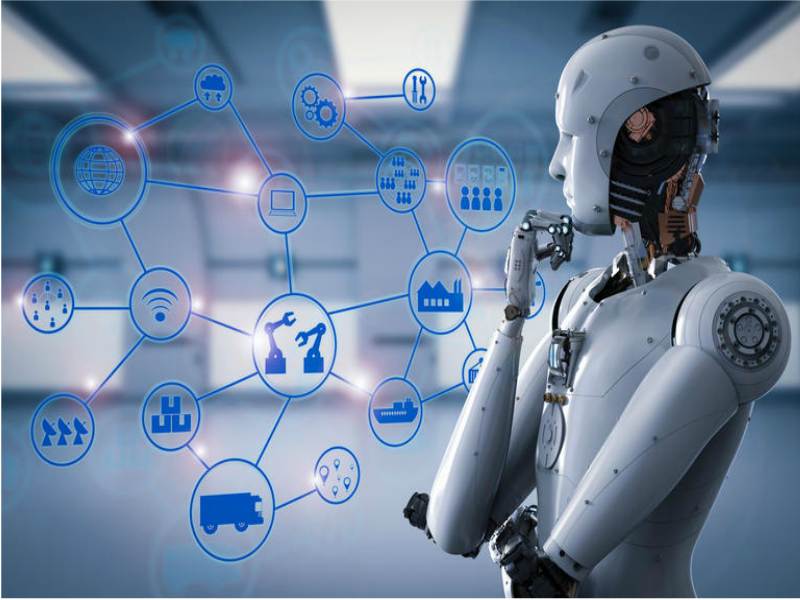Automating various tasks can be a great way to leverage the power of technology and make workplaces more efficient. Automation technologies such as robotics and AI have become increasingly popular in today’s digital world, providing unique opportunities to streamline operations, improve productivity, reduce costs, and enhance living experiences. Discover five benefits you can gain when choosing to incorporate automated technologies into your life.
Automated technologies provide numerous advantages, particularly in daily life. They can save you time, reduce resource consumption, increase productivity, and elevate your level of comfort. Automated technologies are an excellent choice for those who want to advance their work and living environment, expand desk parts capabilities, and live a stressful life. Let’s take a look at the main advantages of incorporating automated technologies into your life.
What Is Meant by Automation Technologies?
Automated technologies refer to the use of computers and other machines, such as robots, to perform tasks that would be too time-consuming or difficult for humans to do manually. Through automation, tasks can be completed much faster and with greater accuracy than with traditional methods.
Automation technologies have been around for decades but have become increasingly sophisticated in recent years due to advances in robotic technology and artificial intelligence (AI). It has enabled automated systems to take on a range of complex tasks, from simple data entry to more complex operations such as self-driving vehicles.
Automated technologies are an invaluable tool for businesses, helping them streamline operations, maximize efficiency, reduce costs, and improve quality. They are also becoming increasingly important for improving everyday life, providing a way to automate mundane tasks and enhance comfort levels.
What are the Benefits of Automation Technology?
Here are the advantages you will get when introducing automated technology into your life:
#1. Save Time and Increase Efficiency
By automating mundane, repetitive tasks, users can free up their time for more productive activities or engage in leisure activities such as relaxation or hobbies.
Automated systems often respond faster than humans due to their ability to process large amounts of data quickly and accurately. Automation helps make workplaces more efficient while freeing up valuable time that would otherwise have been spent on mundane tasks.
#2. Reduce Resource Consumption
By eliminating the need for manual labor, energy use, and emissions can be greatly reduced, as less power is needed to operate automated systems compared to traditional methods. Additionally, automation provides greater accuracy and precision in tasks, which helps reduce waste production due to improved quality control. In this way, automated technologies are a sustainable choice because they help reduce the environmental impact of everyday activities and business operations.
#3. Improve Productivity and Quality of Life
By automating mundane tasks, users have more time available to focus their energies on productive activities or engage in leisure activities that bring satisfaction. This increase in free time makes it possible for users to develop new skills, pursue creative projects, or take on other meaningful responsibilities.
Additionally, automated technologies can enhance comfort levels by taking over mundane tasks such as cleaning or cooking, which allows people to spend more time doing what they enjoy. By improving productivity and quality of life, automation has the potential to make our lives easier and more enjoyable.
#4. Increase Safety
Automated technologies can also play a key role in increasing safety levels by reducing the chances of human error. By removing humans from hazardous or difficult tasks, automated systems reduce the risk of injury or death due to mistakes that may be caused by fatigue, distraction, or a lack of knowledge.
Additionally, automated systems are often better equipped than humans to handle complex operations. For example, self-driving vehicles can make transportation safer for everyone.
#5. Cost Savings
Automated technologies can also provide cost savings by reducing labor costs due to the decreased need for manual labor. They often require less energy and resources compared to traditional methods, which can lead to further cost savings. By utilizing automated technologies, businesses can reduce their overhead expenses while still providing quality results that meet customer demands.
What Are Some Examples of Automation Technology in Real Life?
Examples of automation technology in everyday life include:
- Self-driving vehicles;
- Automatic door openers;
- Automated vacuum cleaners;
- Robotic lawn mowers;
- Home appliances such as washing machines and dishwashers.
Automation technologies are also increasingly being used in:
- Businesses: for tasks like data entry and inventory management;
- Healthcare: facilities to streamline processes such as patient monitoring or medical imaging;
- Social media: the application areas of AI expand ranging from virtual assistants to social media moderation tools.
Automation technologies provide numerous benefits. By leveraging automated technologies, you can increase efficiency, improve productivity, reduce costs, and enhance user experiences while ensuring safety on the job. Automated technologies are an excellent choice for those who want to take their operations to a whole new level of excellence.
Hayley Mann is a technology enthusiast specializing in automation methods of ergonomics devices. Her engineering background helps her to create interesting articles on technical topics, making them understandable for all readers.
This post was last modified on August 30, 2023 4:39 PM

